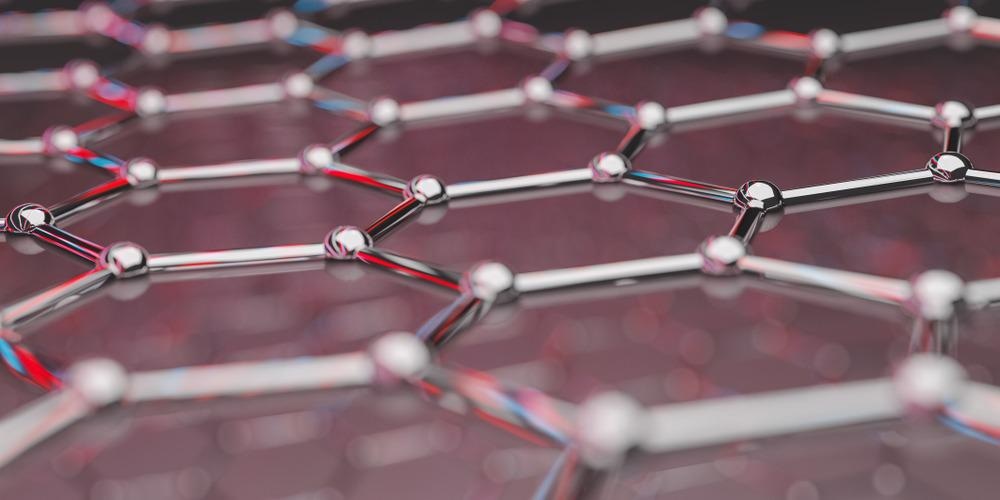A group of researchers recently published a paper in the journal ACS Nano that demonstrated the viability of using ultrasensitive n-channel graphene gas sensors for detecting gases, specifically oxidizing gases.

Study: Ultrasensitive N-Channel Graphene Gas Sensors by Nondestructive Molecular Doping. Image Credit:
Production Perig/Shutterstock.com
Background
Graphene-based gas sensors are gaining prominence owing to their extremely good electrical properties, such as low noise level of current, high carrier mobility, and high specific surface area that favors greater molecular absorption, which are all beneficial for gas sensing applications.
Thus, graphene-based gas sensors are developed for detecting bipolar gases with a single molecular level, such as ammonia (NH3) and nitrogen dioxide (NO2).
To use graphene gas sensors for practical applications, the fabrication of a sensor array over a large area is necessary. This is often performed by chemical vapor deposition (CVD) techniques.
CVD can yield single-layer and high-quality graphene on a copper (Cu) catalyst.
There are several methods to achieve selective detection of target gas molecules with a low detection limit, such as defect engineering of graphene, change transfer doping, and nondestructive molecular doping.
Among them, nondestructive molecular doping is the most suitable for selective detection of target gas molecules in a gas mixture as the method does not lead to any reduction in the carrier mobility of graphene.
In this study, researchers investigated the gas sensing performance of n-channel of n-doped graphene gas sensors developed by nondestructive molecular doping of graphene.
The Study
The CVD technique was used to grow the high-quality monolayer graphene on the Cu foil.
A silicon (Si) wafer with a 300 nm thick thermally grown silicon dioxide (SiO2) was cleaned using distilled water, isopropanol, and acetone. Subsequently, the SiO2/Si was treated for 30 min with ultraviolet/ozone and spin-coated with hexamethyldisilazane (HMDS).
The HMDS-coated Si/SiO2 was heat-treated for 40 min at 120 oC, followed by 30 s of sonication in toluene to eliminate the remaining HMDS molecules.
Subsequently, a poly (methyl methacrylate) (PMMA) supporting layer was used to transfer the graphene from the Cu foil to the HMDS-treated Si/SiO2.
Initially, the graphene with PMMA was floated in 0.05 M ammonium persulfate solution in order to etch the Cu layer on the back of the graphene.
After the complete removal of Cu, the graphene with PMMA was cleaned twice for 20 min in distilled water to remove the remaining etching solution and then transferred to the surface of HMDS-treated Si/SiO2.
The HMDS-treated Si/SiO2 was heat-treated at 120 oC overnight to improve adhesion between the surface of HMDS-treated Si/SiO2 and graphene. Finally, the PMMA layer from the graphene was removed with acetone.
The graphene field-effect transistors (FETs) were fabricated by thermally evaporating the gold (Au) drain/source electrodes with a metal mask at a rate of 0.1 nm/s.
Triethylenetetramine (TETA-), (diethylenetriamine) DETA-, and ethylenediamine (EDA)-doping molecules were then evaporated on a hot plate to transfer them onto the graphene. DETA and EDA molecules which were evaporated at 70 oC, while TETA molecules were evaporated at 120 oC.
Raman spectroscopy with a 532 nm laser of 1 mW intensity was employed to investigate the graphene quality and degree of doping, while atomic force microscopy (AFM) was utilized to evaluate the surface morphology of graphene films.
The graphene transistor performance was measured using a probe station, while the gas-sensor characteristics, including the limit of detection (LOD), were determined using an in-built gas sensor set up.
The degree absorption energies of NH3 and NO2 against the electron doping concentration in the graphene monolayer were determined by first-principles calculations within the framework of the density functional theory (DFT).
Absorption energies of NH3 and NO2 were evaluated using the grand partition function by measuring the surface coverage.
Observations
The graphene FET displayed an improved gas sensing performance by molecular n-doping with TETA, DETA, and EDA.
Although the extent of n-doping in graphene FET was highest with TETA and lowest with EDA, the response of the graphene sensor to the target NO2 gas was highest when the FET was doped with DETA, followed by EDA, TETA, and pure graphene.
The optimal doping condition for improved recovery, response, and long-term stability of the graphene gas sensor was achieved when graphene was doped with DETA.
The source-gate current in the zero-gate bias condition decreased after being exposed to an oxidizing gas NO2 as the n-doped graphene was operating in the n-channel region.
In the cross-sensitivity test, graphene doped with DETA showed no response to NH3, indicating that the sensor can effectively detect oxidizing gases within a gas mixture.
Theoretical calculations demonstrated that the attractive electrostatic interactions between electron-deficient NO2 and electron-rich n-doped graphene were primarily responsible for the selective absorption of NO2 by the n-doped graphene sensor.
Additionally, the sudden decrease in electron mobility in n-doped graphene upon exposure to NO2 further improved the NO2 sensitivity in DETA-doped graphene.
The DETA-doped graphene showed a substantially low average LOD of 0.83 parts per quadrillion (ppq).
Taken together, the findings of this study showed that the n-channel operation in an n-doped graphene gas sensor with gate-free architecture is critical for improving the selectivity and sensitivity to oxidizing gases such as NO2.
Reference
Kwon, B., Bae, H., Lee, H. et al. (2022) Ultrasensitive N-Channel Graphene Gas Sensors by Nondestructive Molecular Doping. ACS Nano Available at: https://pubs.acs.org/doi/10.1021/acsnano.1c08186
Disclaimer: The views expressed here are those of the author expressed in their private capacity and do not necessarily represent the views of AZoM.com Limited T/A AZoNetwork the owner and operator of this website. This disclaimer forms part of the Terms and conditions of use of this website.